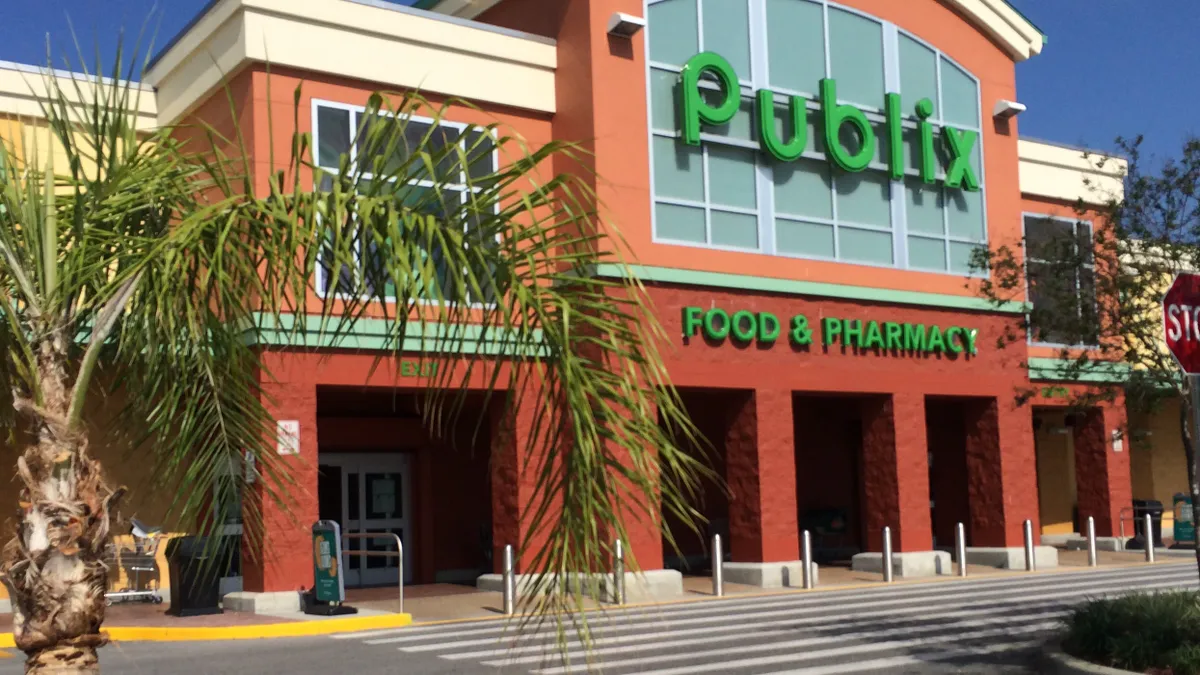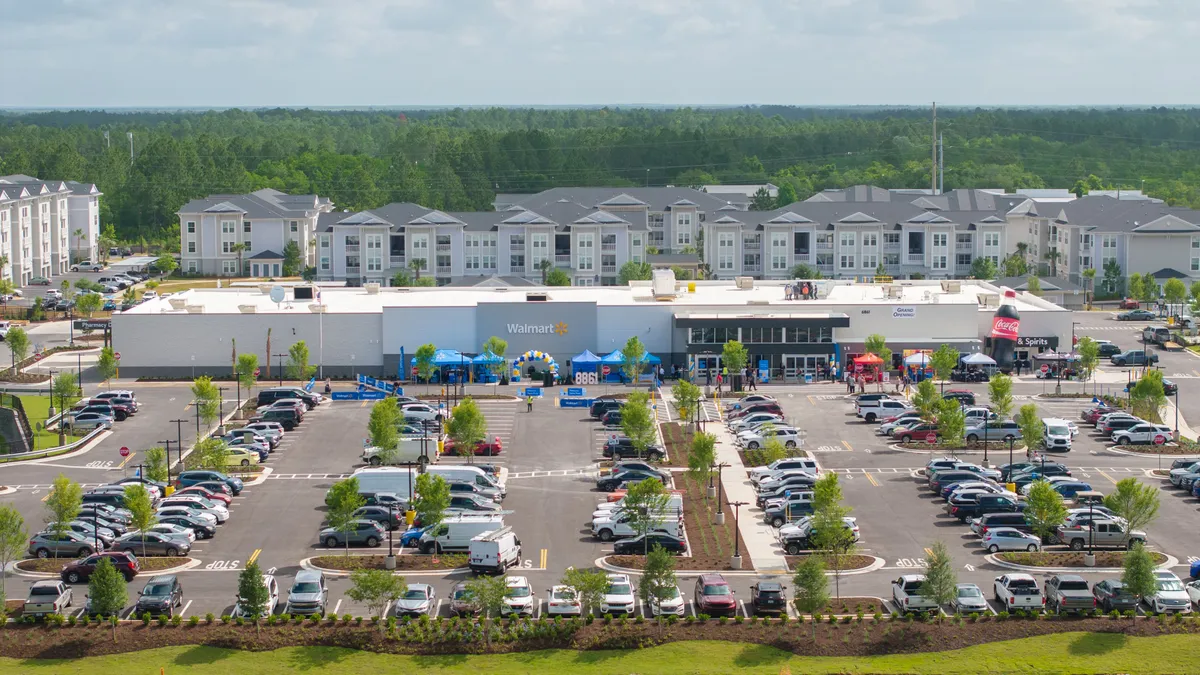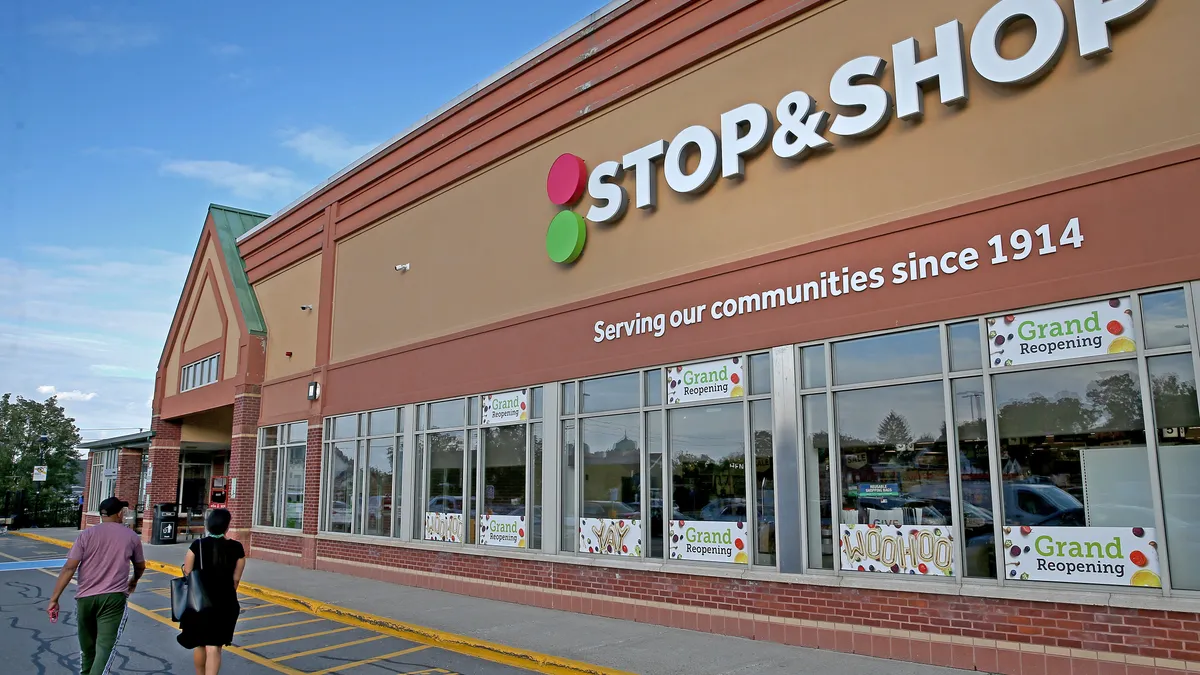Dive Brief:
- Publix recorded net sales of $9.3 billion for the first fiscal quarter of 2018 — a 6.8% increase over the same period last year, according to a company release. Publix attributed 1.2% of the increase to the Easter holiday falling in the first quarter instead of the second, as it did last year.
- Same-store sales for the period were up 5.1% while net earnings were up 22.5% over last year’s Q1 to $680 million, or 93 cents per share. Publix credited the recent tax reform for a portion of its earnings boost.
- Publix’s stock price increased from $41.40 per share to $41.75, marking a third consecutive quarter of growth. The company’s stock is not publicly traded, and only available to board members and company employees.
Dive Insight:
Publix continues to post strong growth numbers even as it faces mounting challenges in both its home state of Florida and in new markets.
In the Sunshine State, Publix has become the market share leader by pummeling lesser competitors like Winn-Dixie and Sweetbay. These days, it faces a stronger class of challengers like Walmart and Aldi along with a raft of specialty retailers, including Sprouts Farmers Market, Lucky’s Market and Earth Fare. All of these retailers have built new locations in markets like Orlando and Tampa Bay which have seen a growing number of millennial consumers in recent years.
Publix is also squaring off against conventional powerhouses like Kroger and Ahold Delhaize as it moves up the East Coast. In North Carolina, it’s going up against another retailer that trades on service and execution: Harris Teeter. In Richmond, Virginia, where Publix recently landed, it’s going up against a host of major competitors as it seeks to fill the void left by the former Ukrop’s chain.
As specialty chains expand in Florida and elsewhere, Publix will need to hone its focus on natural and organic products. Not that it’s any slouch in this department: The company offers its own Greenwise products along with a wide range of local and brand-name organic products. It also recently jump-started its Greenwise store concept, which should inform its approach against other small-format specialty competitors, and could even become a substantial chain in its own right.
Publix also needs to compete on price. If the chain has an Achilles heel, it’s here — though it is increasingly trying to convey value through store messaging and deals like buy-one-get-one-free that often appear at the front end of stores.
Publix’s strongest asset is its focus on service and execution. It’s a simple concept, really, though intensely difficult to carry out on such a broad scale. The rewards are clear, however: As online competition continues to threaten store trips, and as major players like Walmart throw their weight around, good service is the best defense grocers have.










